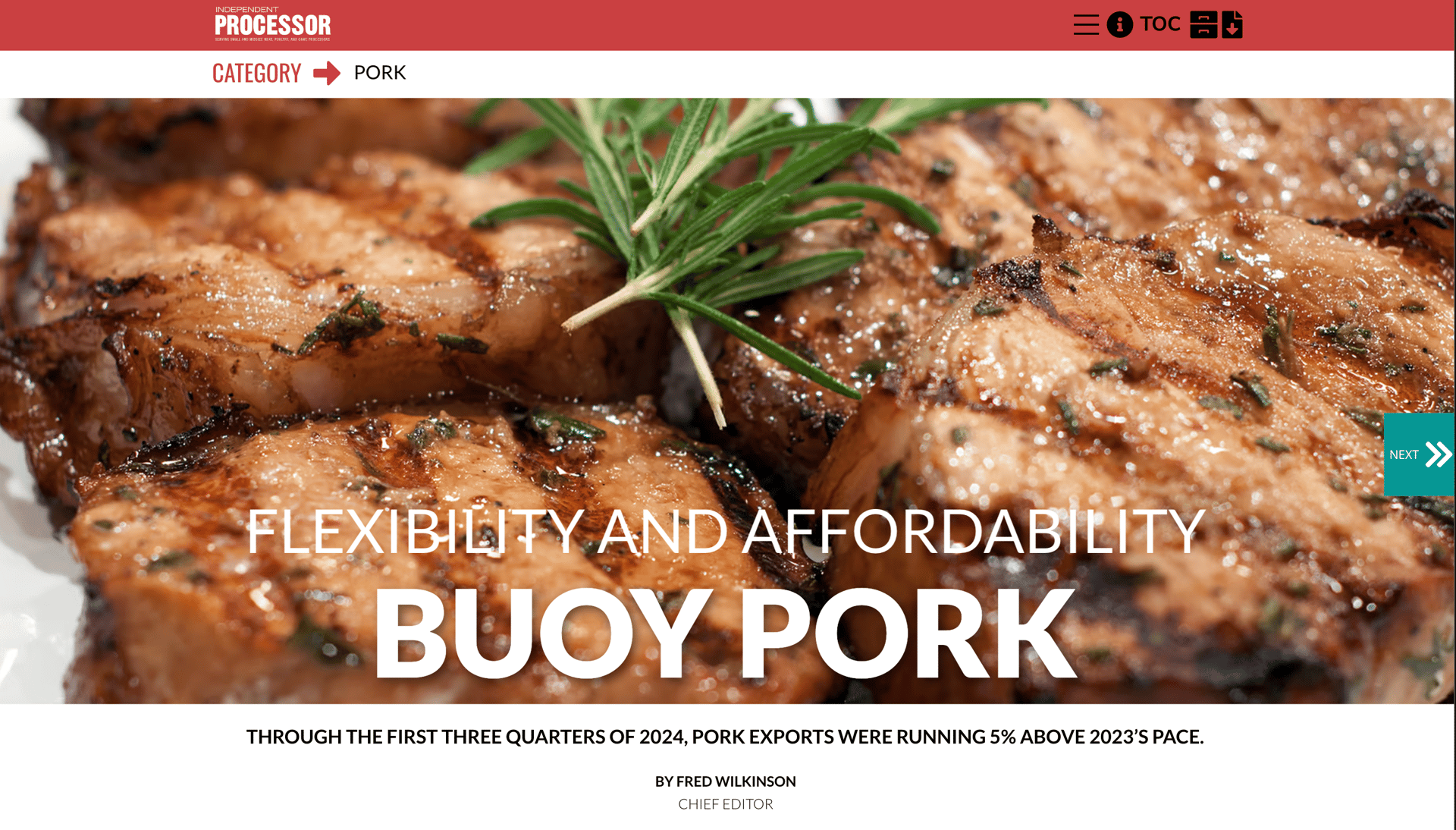
special report
ECONOMIC OUTLOOK 2025
Tight supplies, high prices
plague small processors
Small meat and poultry processors get creative to adjust to a difficult economic environment.
Associate Group Editor
By Sammy Bredar
We’re not in a recession. Right? By definition, we are certainly not in a recession. Ask the average American, though, and you might get a different response.
Despite continued assurances that we are not in a recessionary economic environment, meat and poultry processors, especially small producers, know that is not true. Ongoing high prices, a difficult labor market, tight beef supplies and ongoing regulatory pressures continue to plague the protein industry.
The continued tight beef market is set to impact small processors throughout 2025, particularly those who are buying in boxed beef, said American Association of Meat Processors Executive Director Chris Young. With tight supplies and high prices, small processors are likely to feel the impact more than larger processors.
To adjust to the tight beef market, small processors are getting creative. “A lot of our members have been sourcing through local farmers, and that seems to be working for some of them,” Young said.
Despite the tight beef market, consumer demand for the protein is strong. In a webinar titled “Outlook on the Meat Consumer: Trends You Need to Know,” Circana Principal Melissa Rodriguez said beef is a strong growth driver at retail, with sales up 8.3% and volume up by 2.2%. Younger consumers in particular are buying a lot of beef, with Gen Z and Millenial beef sales up by 21%, and pounds up by 13.7%.
Young consumers are gaining more spending power, and their preference for beef is clear. Despite high beef prices and tight supplies, beef has a bright future.
We’re not in a recession. Right? By definition, we are certainly not in a recession. Ask the average American, though, and you might get a different response.
Despite continued assurances that we are not in a recessionary economic environment, meat and poultry processors, especially small producers, know that is not true. Ongoing high prices, a difficult labor market, tight beef supplies and ongoing regulatory pressures continue to plague the protein industry.
The continued tight beef market is set to impact small processors throughout 2025, particularly those who are buying in boxed beef, said American Association of Meat Processors Executive Director Chris Young. With tight supplies and high prices, small processors are likely to feel the impact more than larger processors.
To adjust to the tight beef market, small processors are getting creative. “A lot of our members have been sourcing through local farmers, and that seems to be working for some of them,” Young said.
Despite the tight beef market, consumer demand for the protein is strong. In a webinar titled “Outlook on the Meat Consumer: Trends You Need to Know,” Circana Principal Melissa Rodriguez said beef is a strong growth driver at retail, with sales up 8.3% and volume up by 2.2%. Younger consumers in particular are buying a lot of beef, with Gen Z and Millenial beef sales up by 21%, and pounds up by 13.7%.
For small processors looking to expand in the coming year, there are clear growth opportunities within the local food movement. Young noted that the local food movement first started ramping up when he joined AAMP in 2015, and the movement has not showed signs of slowing down.
“I don’t think that the farm-to-table movement is going away,” Young said. “I think that with the younger generation wanting to know especially where their food is coming from, there’s a lot more people buying local. That’s pushed business back. I think that opportunity is still there for the small processors.”
The challenge for small processors is offering a quality product at a price consumers can afford. At the same time, processors need to charge enough to set off rising costs for labor and production. Young noted that, currently, the trajectory of the economy is not sustainable for many small meat and poultry processors.
I think that with the younger generation wanting to know especially where their food is coming from, there’s a lot more people buying local. That’s pushed business back. I think that opportunity is still there for the small processors.
Labor outlook
Another persistent challenge for processors is acquiring and maintaining a solid labor force. “That’s just really about putting warm bodies in to do something,” Young said. “That’s not even talking about the challenge of finding skilled labor.”
While labor has always been a challenge for the meat and poultry industries, every segment of the food industry is now facing labor shortages and challenges. “I don’t see it changing much,” Young said. “It’s going to be a challenge, and it will continue to be a challenge.”
In today’s economic environment, paying workers can be difficult enough, let alone offering benefits. Young said that AAMP as an organization is trying to help its members think outside the box when considering potential employee benefits.
“Maybe you’re going to pay them X amount an hour, but you also offer them the opportunity to buy some of their meat and poultry at wholesale prices,” Young said. “So that they can put food on the table at a reduced cost to them, rather than buying it at regular price in the grocery store.”
By getting creative with employee retention efforts, processors can stay competitive in a difficult economic climate.
Economic development
Despite persistent challenges, the meat and poultry industries continue to thrive in the face of adversity. State and federal funding can help small meat and poultry processors bolster their operations, enabling growth, expansion and new market access.
Although various state and federal programs offer funding to small processors, Young said he would like to see more federal funding opportunities consistently available.
“The grants that have come out since Covid have taken care of a handful, but it has nowhere near covered what would be needed,” Young said.
“It would be nice to see a number of years here of ongoing grants so that different plants could take advantage of that and be able to use some of that grant money to expand their businesses or bring in automation and those different types of things that will help them to produce more and provide more for their local markets,” Young said. “Because the fact is, a lot of our folks are in small towns in rural America, and they’re the ones that are feeding that community. If you can add on or automate to be able to reduce your costs, then it makes it better for everybody.”
Regulatory issues
As we approach 2025, poultry processors in particular are keeping an eye on the Salmonella proposed rule, and meat and poultry processors both large and small are anxiously awaiting the EPA wastewater final rule.
“They said it’s going to be out by the end of the year, but we haven’t heard anything,” Young said. “We’re not sure what affect the Supreme Court Chevron ruling will have on that final rule or any other final rules or regulatory things coming down the line from some of the agencies.”
Opening image credit: Fred Wilkinson


